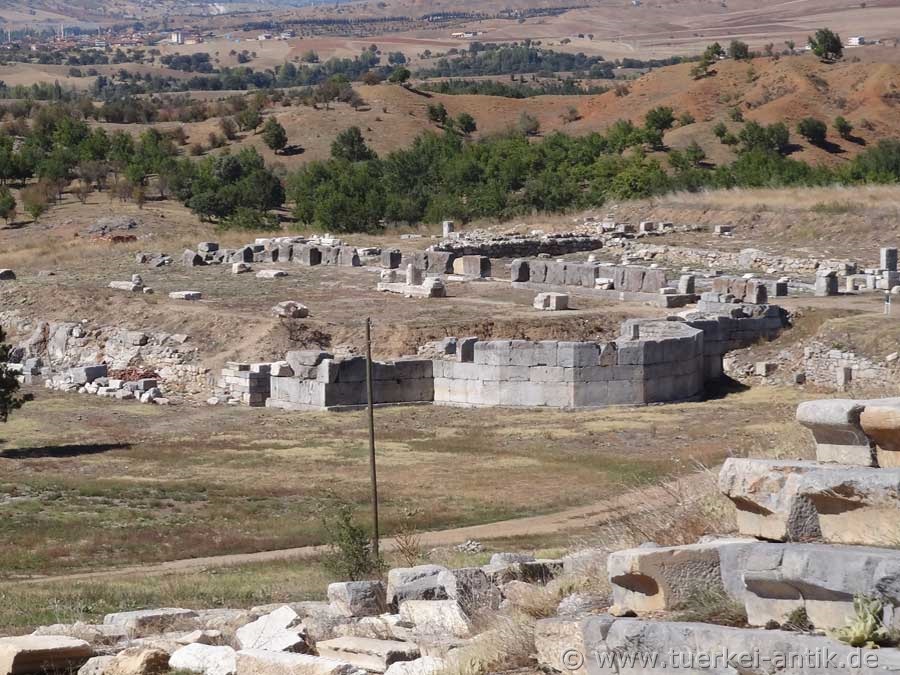 |
| Antioch of Pisidia | |||
 |
|
||
| The Aqueduct | |||
|
Antioch of Pisidia (Latin Antiochia ad Pisidiam, also Antiochia Caesarea or Colonia Caesarea) is one of several cities founded and named after itself by seleukidic rulers named Antiochos. |
|||
|
|
|||
| The West Gate (today's entrance to the city) | |||
|
The Pisidian Antioch was built with settlers of Magnesia in a strategic place near today's Yalvaç. After the foundation of the Roman province of Galatia, the city was once again founded in 25 BC as a veteran colony under the name Colonia Caesarea Antiochia. It was connected to other Augustan foundations in Asia Minor via the important military road via Sebaste. In the course of the imperial reform of Diocletian, Antioch became the metropolis of the newly founded province of Pisidia. |
|||
|
|
|||
| The Decumanus Maximus Street | |||
|
Antioch of Pisidia quickly developed into one of the most important Roman cities in Asia Minor. Already in the 1st century A.D. several senators can be traced back to Antioch. |
|||
|
|
|||
| The Theatre | |||
|
|
|||
| The Temple of Augustus | |||
|
|
|||
|
|
|||
|
The Nympheum from the 1st century A.D. |
|||
|
|
|||
|
Excavations in Antioch have uncovered a large Byzantine basilica, a theatre, a spa, a fountain, an Augustus temple and an aqueduct. The museum in Yalvac contains finds from Antioch and the early history of the landscape. |
|||
|
|
|||
|
|
|||
|
The Roman Baths |
|||
|
|
|||
 |
|||
| The St. Paul Basilica | |||
|
|
|||
|
Antioch in Pisidia is known from the missionary journeys of the apostle Paul of Tarsus. In his honour a large basilica was built in Byzantine times, which still bears his name today. The city is the end of the Paulus Trail, a hiking and pilgrimage trail that starts in Perge near Antalya. |
|||
| Photos: @chim, Monika P. | |||
| Translation aid: www.DeepL.com/Translator | |||
| Source: Wikipedia and others | |||
|
|
|||

